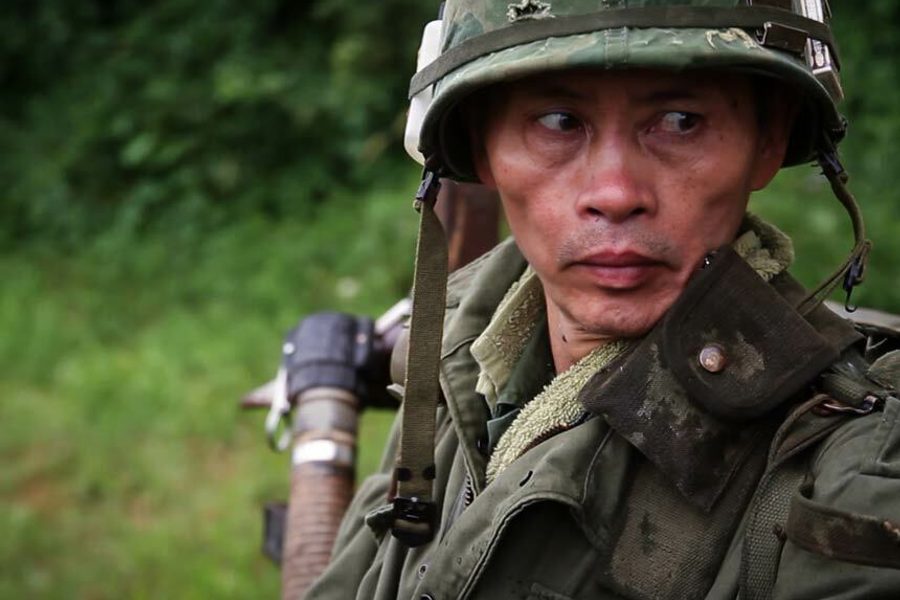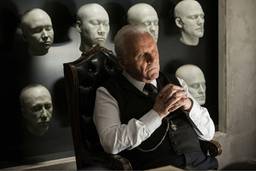Why Some Vets Want to Relive Vietnam
A new documentary follows the weird subculture of Vietnam War reenactors—some of whom were actually there.
Eileen Jones

We’re all familiar with Civil War reenactment, that pastime of tens of thousands of Americans. As odd an avocation as that might seem, it makes sense, in that the Civil War looms large in the American imagination: Its horrors are fully intertwined with its glories. The conflict defines our national identity, representing “a new birth of freedom” in the emancipation of the slaves, the preservation of the Union and the salvation of an experimental democracy. Even the South’s maddeningly wrongheaded “War of Northern Aggression” was fought in epic terms of bravery and self-sacrifice.
But who in their right mind would want to reenact the Vietnam War, that vile misadventure in anti-Communism run amok?
In Country, directed by Mike Attie and Meghan O’Hara, investigates the strange subculture of those who do, following a cadre of dedicated Vietnam War reenactors in rural Oregon.
Strange subculture documentaries can effectively overwhelm our dismissive attitudes — take, say, Errol Morris’s mesmerizing film about pet cemeteries, Gates of Heaven (1978). But that standard is a tough one to meet, and, though diverting, In Country doesn’t come close.
The film’s opening scenes depict an urban liberal’s nightmare of the heartland: flags, “God Bless America” signs and tiresome white guy machismo. The elaborate preparations for the annual weekend-long reenactment involve shopping for military gear, food and supplies; setting up base camp; and training “raw recruits” on procedures and the culture of the era: “Drugs. Rock and roll — and I’m talkin’ hard rock and roll…Hippie culture!” The reenactors demonstrate their cultural understanding by wearing oversized peace sign pendants and helmets with “Sock It To Me” inked on them.
This training is intercut with footage of actual basic training for Vietnam War recruits, with equally surreal moments such as “preventive dentistry class” for “the proper care of your teeth in country.”
But generally, the Vietnam War footage serves to demonstrate the obvious contrast between real war and fake war. You compare the soft, slack face of the playacting “soldier” who says, after a hard day’s reenacting, “I’d love to be killin’ some shit, but my feet are killin’ me,” to the gaunt, hollow-eyed visage of the Vietnam soldier nicknamed “Killer,” who laughs dryly about shooting “a coupla gooks” who were “takin’ a bath.”
Surprisingly, some of the enthusiastic reenactors are veterans of actual wars, men who have seen service in Iraq and Vietnam, the very last people you’d expect to have any tolerance for phony combat and clueless playacting. But as Iraq vet and reenactor Charles “Tuna” Ford seems to suggest, some volunteer to go to war for the same reason they reenact it: “It’s such a crazy high, like, the adrenaline. Some people skateboard, some people ride fast bikes, some people shoot heroin. … I go to war.”
Tuna represents the plain fact that plenty of people like war. After the reenactment, he returns for another tour in Afghanistan.
Another vet, Lucien “Doc” Darensburg, who served as a medic in Iraq, is less forthcoming about what motivates his reenacting, other than a basic estrangement from civilians who don’t understand his war experience. He is frank about the PTSD symptoms he now suffers, such as terrifying death dreams and a loss of emotional range: “Everything’s just surface personality. … Deep emotions, I can’t find them.”
When asked about the war, he says, “I have generic answers. Like if someone says, ‘How was it?’ I go, ‘It was hot.’ ”
And then there’s Vinh Nguyen, a grave, middle-aged veteran of the South Vietnamese Army who proudly fought for his country alongside the Americans. When asked about why he’d want to revisit the bad memories, he seems slightly offended: “I don’t know what exactly you said, ‘a bad memory.’ Still now, 36 years [later], I’m still stronger when I am with the South Vietnam Army.”
Nguyen says he fights to recover “what I was in the past.” He connects his struggle with his father’s and grandfather’s, a lineage of idealism and strength.
Of course, the veterans are outnumbered by guys who, as one admits, “always wanted to have these experiences without actually having to join the military.”
At least In Country attempts an honest assessment of the various ways people respond to real and recreated combat. For some of them, war isn’t always hell, or at least, other hells are worse — the hell of purposelessness, of loneliness and anomie, of numbing boredom, of aging and loss of strength. Until the end, that is, when the film retreats from such complexities. It returns us to rural Oregon to watch Tuna coming home from Afghanistan to a parade where children pose with guns, fireworks erupt, flags wave and the crowd chants, “USA! USA!”
As Tuna walks off with his family, his son asks, “Daddy, were you hot in the desert?” and Tuna answers, “Yes, it was really hot, buddy.”
We’re clearly supposed to recall Doc’s answer to civilians who don’t understand the veteran’s experience. But it has the odd effect of collapsing Doc’s PTSD with Tuna’s absolute love of combat, making Tuna seem like just another war-traumatized victim in a knee-jerk pacifist meditation.
In other words, we’re put right back where we started: War is hell, heartland patriotism is alarming, and war reenactors are weird.

I hope you found this article important. Before you leave, I want to ask you to consider supporting our work with a donation. In These Times needs readers like you to help sustain our mission. We don’t depend on—or want—corporate advertising or deep-pocketed billionaires to fund our journalism. We’re supported by you, the reader, so we can focus on covering the issues that matter most to the progressive movement without fear or compromise.
Our work isn’t hidden behind a paywall because of people like you who support our journalism. We want to keep it that way. If you value the work we do and the movements we cover, please consider donating to In These Times.







